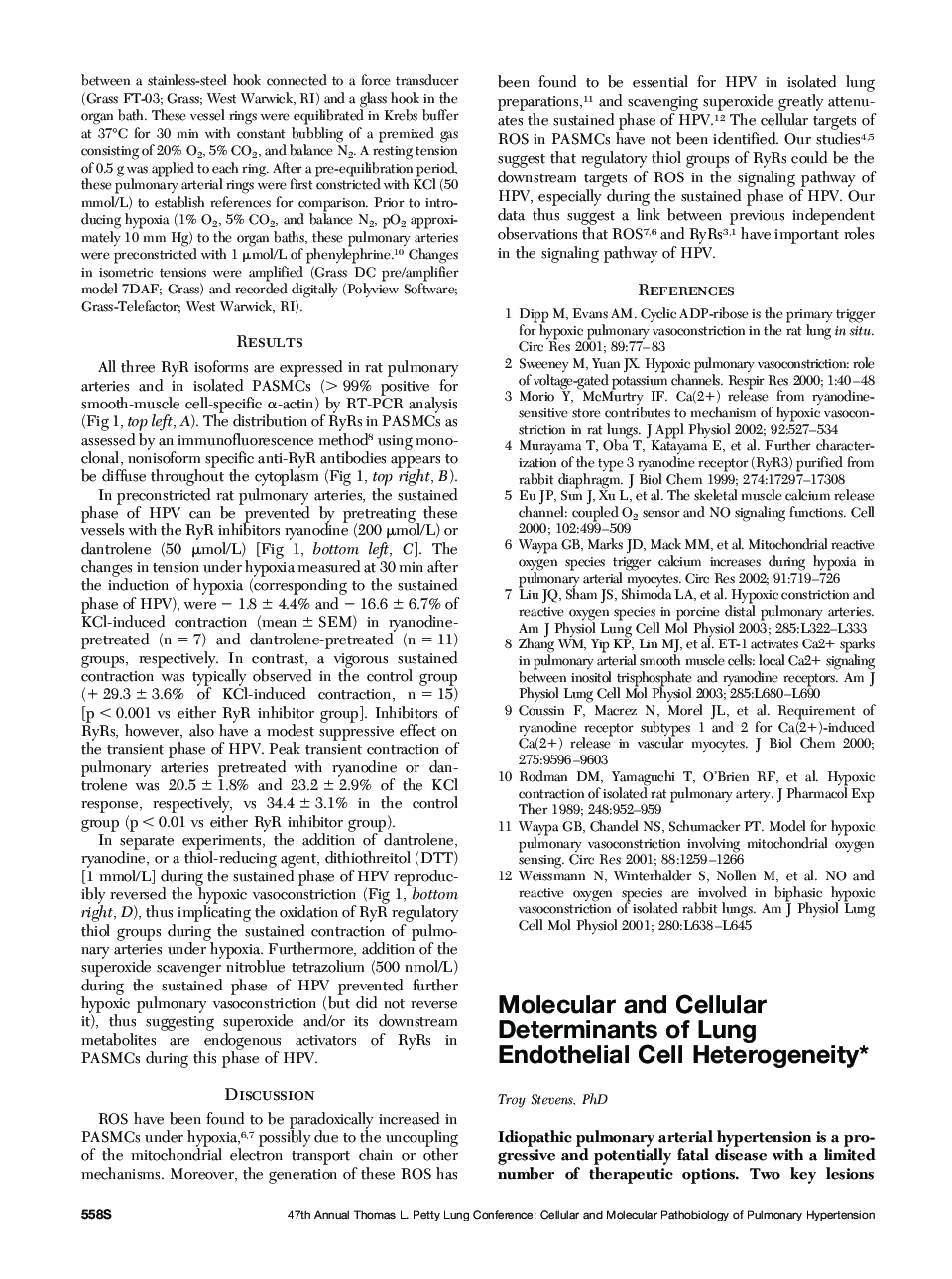| Article ID | Journal | Published Year | Pages | File Type |
|---|---|---|---|---|
| 9161533 | Chest | 2005 | 7 Pages |
Abstract
Idiopathic pulmonary arterial hypertension is a progressive and potentially fatal disease with a limited number of therapeutic options. Two key lesions underlie the pathophysiology of this disease. The principal lesion is found in large- and intermediate-sized blood vessels and is characterized by medial and adventitial hypertrophy/hyperplasia, with distal extension of smooth-muscle layers into normally nonmuscularized vessels. The second lesion, found prominently in severe forms of pulmonary hypertension, originates in small precapillary vessel segments, commonly at blood vessel bifurcations. This “plexiform lesion” is a lumen-obliterative lesion comprised, at least in part, of cells that share endothelial cell attributes, but that have lost the “law of the monolayer.” Indeed, the endothelial contribution to the (mal-)adaptive response in pulmonary hypertension is becoming increasingly apparent, with evidence that endothelium plays an important role in promoting the vasoconstriction and hyperproliferation of medial and adventitial cell layers in large- and intermediate-vessel sizes, and lumen obliteration in the plexiform lesion. Recent evidence indicates endothelial cells along the pulmonary artery and precapillary segments are phenotypically distinct and may fulfill different roles in these site-specific lesions. Thus, the present review summarizes our current understanding of pulmonary endothelial cell heterogeneity and discusses the potential role(s) of endothelial cell heterogeneity in the pathogenesis of pulmonary hypertension.
Keywords
Related Topics
Health Sciences
Medicine and Dentistry
Cardiology and Cardiovascular Medicine
Authors
Stevens PhD,
